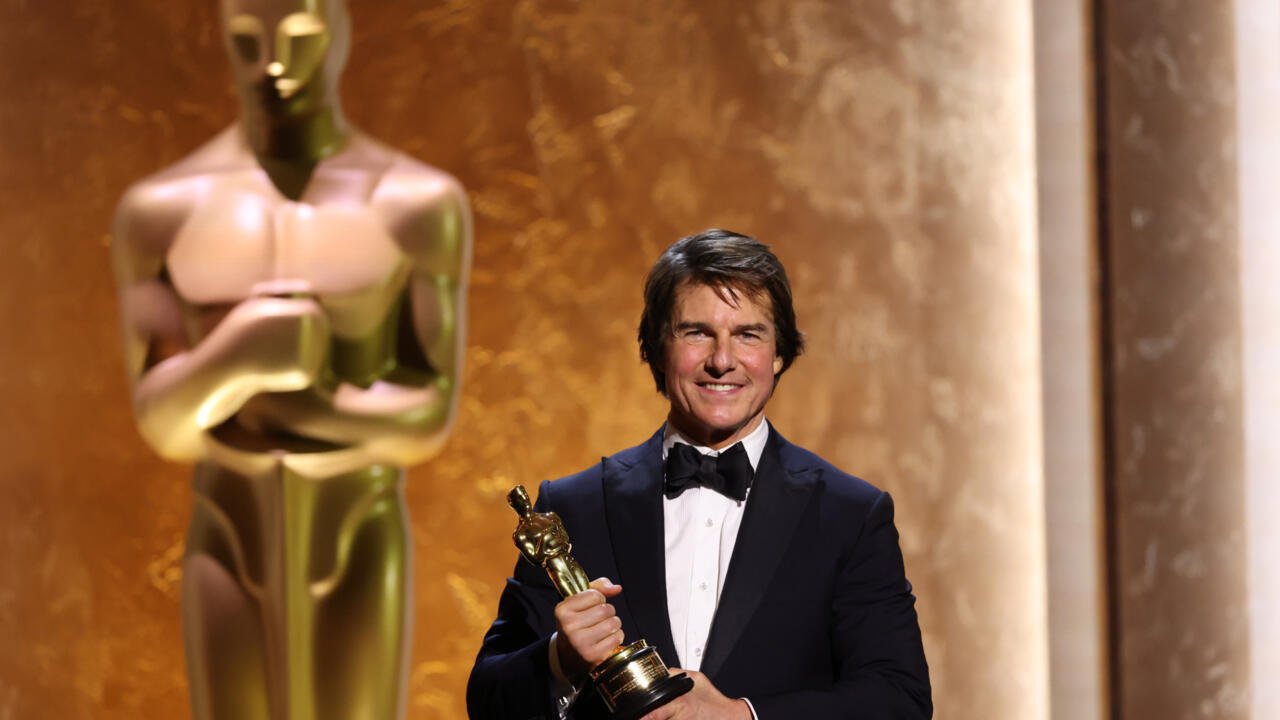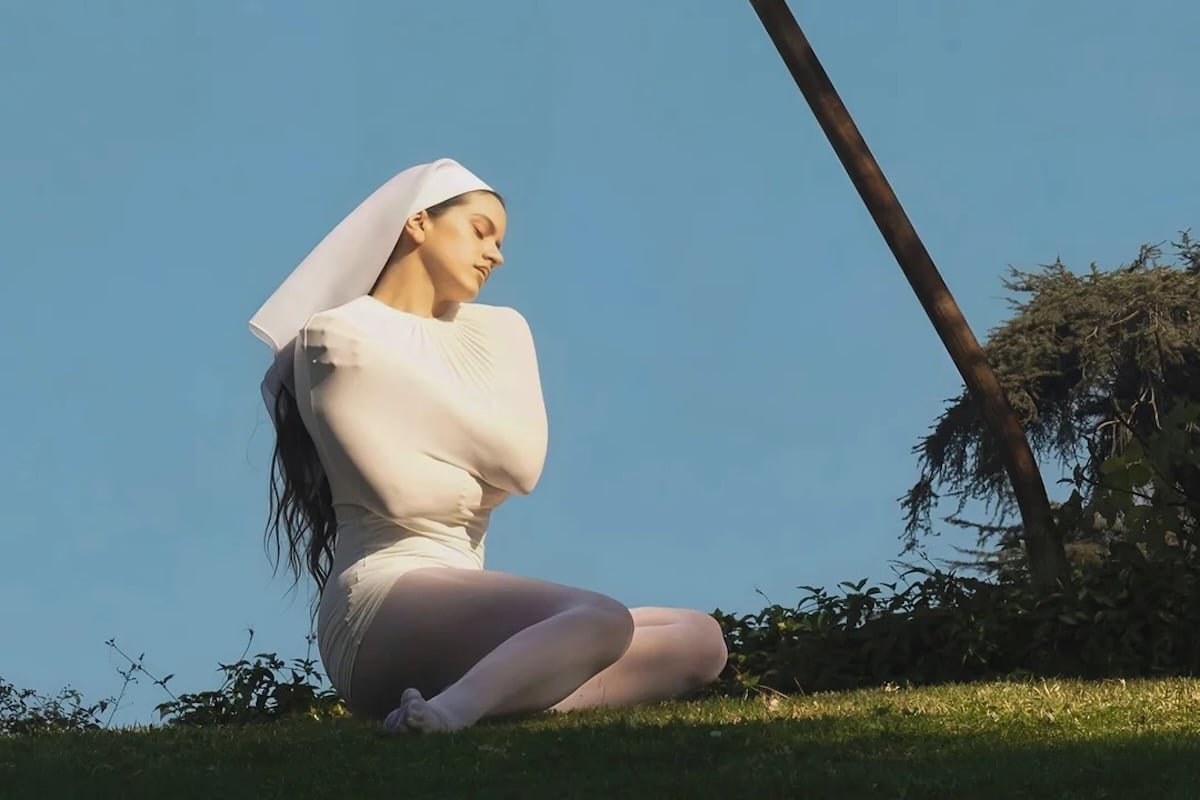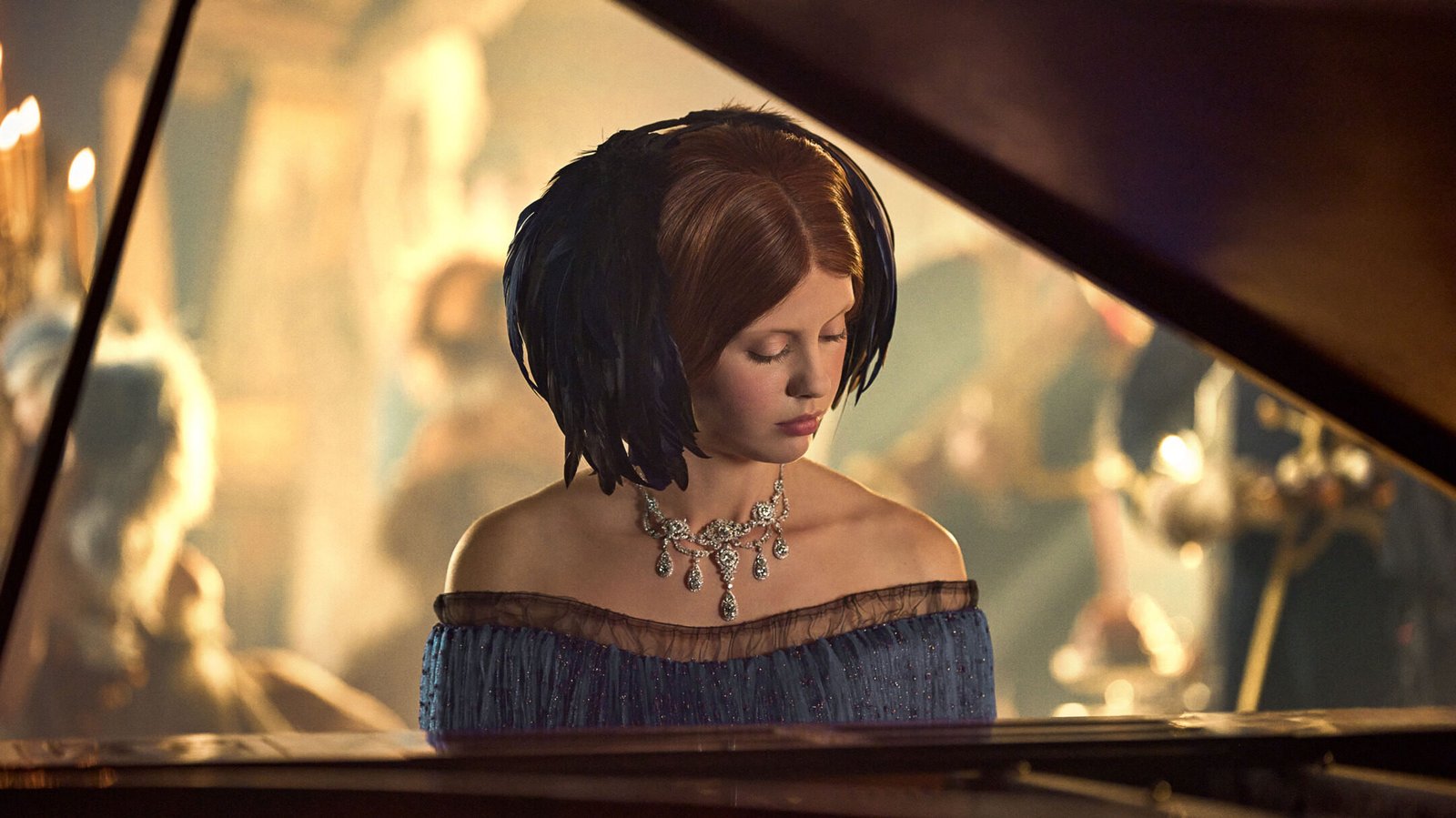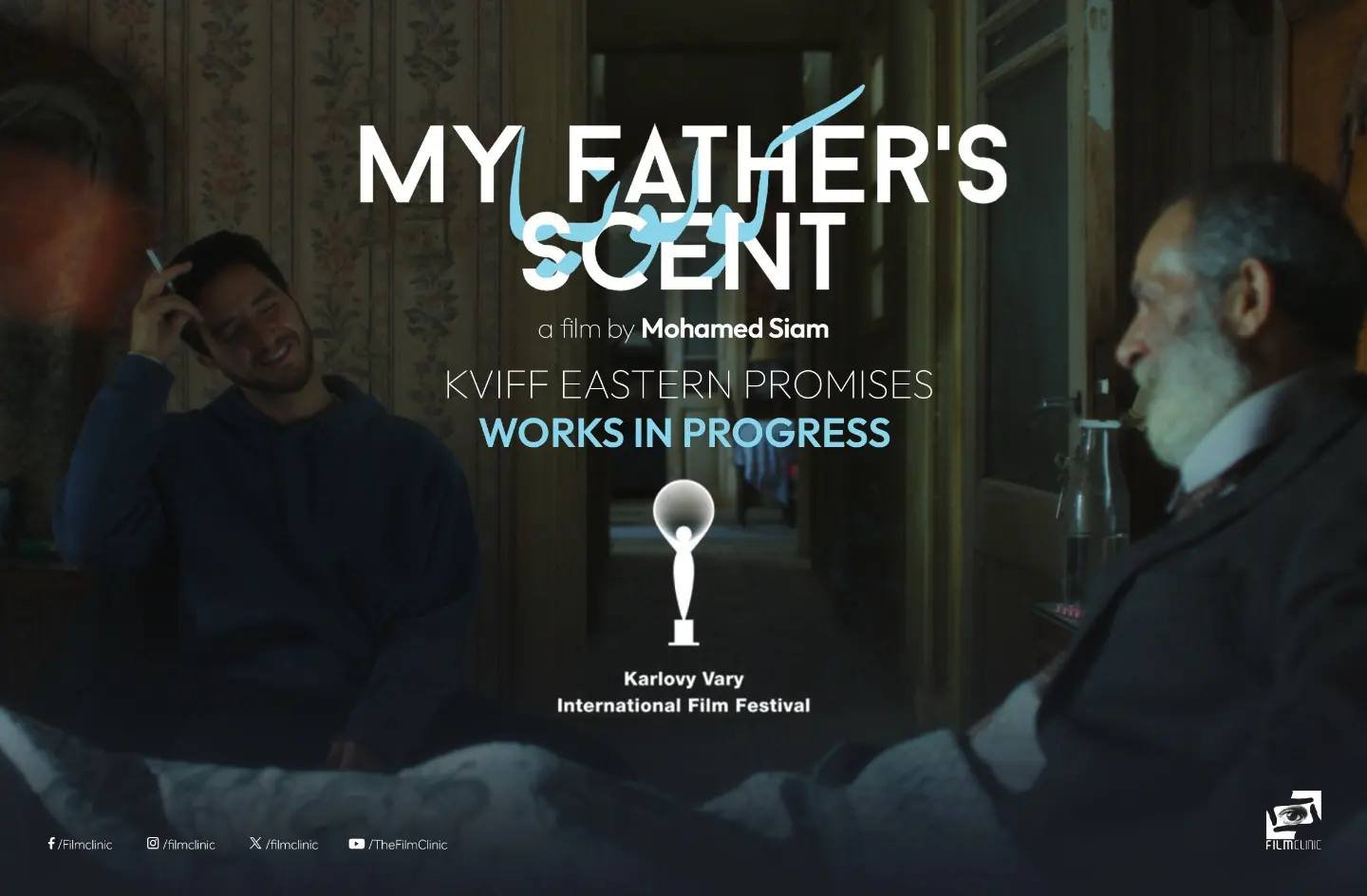In a collaboration as unexpected as it is exquisite, Tiffany Frankenstein Netflix marks a convergence of Gothic horror and high jewelry. Tiffany & Co. has become the first luxury jeweler to partner with Netflix, adorning Guillermo del Toro’s haunting new adaptation of Frankenstein with authentic 19th and 20th-century pieces from their extensive archives. This partnership breathes new life into both Mary Shelley’s 1818 masterpiece and the timeless elegance of Tiffany’s historical collection.
Tiffany’s Legacy: A History Entwined with Hollywood
Tiffany & Co.’s relationship with cinema isn’t new; the House has been “entwined with Hollywood’s most iconic moments,” as they note in their announcement.
But this Netflix partnership represents something different, not product placement, but genuine historical collaboration.
The jewels worn by Mia Goth’s Elizabeth in the film aren’t modern recreations; they’re authentic pieces from Tiffany’s archives, some of which haven’t been displayed or worn since their original owners.
“We wanted to pull pieces that were from the age of Mary Shelley so that you could study the choices our designers were making at that time,” explained Christopher Young, Vice President and Creative Director of Tiffany Patrimony and Global Creative Visual Merchandising, in a behind-the-scenes featurette. The result, as jewelers describe it, blurs “the line between jewelry and art.”
Del Toro’s Vision: A Return to Frankenstein’s Gothic Literary Roots
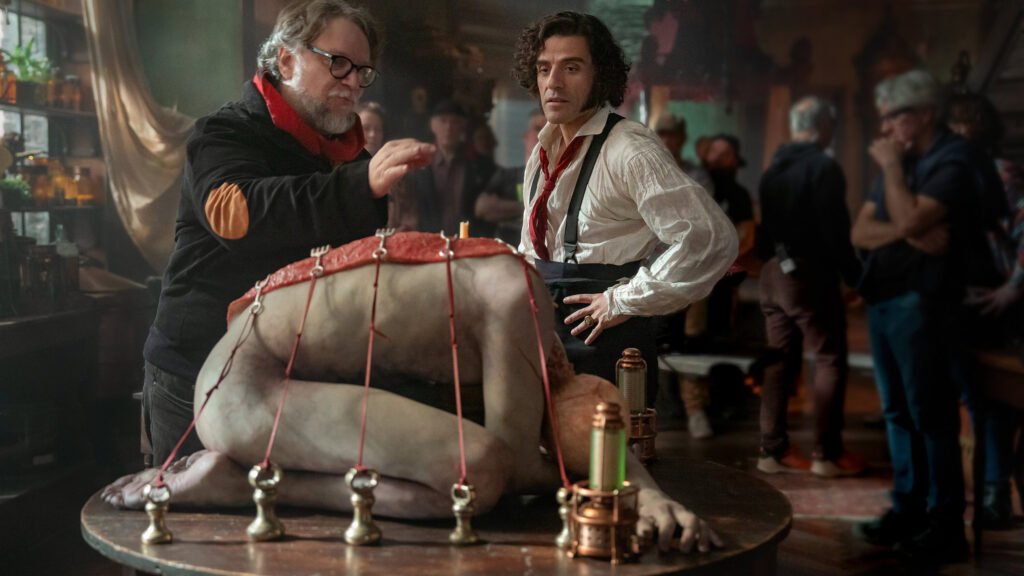
Guillermo del Toro’s 2025 adaptation represents something different: a director who deeply understands both Gothic literature and the sympathetic monster.
“The usual discourse of Frankenstein has to do with science gone awry,” del Toro told Variety. “But for me, it’s about the human spirit. It’s not a cautionary tale: It’s about forgiveness, understanding, and the importance of listening to each other.”
Del Toro’s version retains the novel’s framing device, the Arctic ship where Victor tells his story, and crucially, gives the Creature (Jacob Elordi) his voice and intelligence back. Unlike the 1931 version’s mute, stumbling monster, this Creature can articulate his pain, his loneliness, and his desire for connection.
The film also diverges from the novel in significant ways: it’s set during the Crimean War rather than the late 18th century, Victor has an abusive father (absent in the novel), and Elizabeth’s character is completely reimagined.
Jewels That Tell a Story: Elizabeth’s Entomologist Wardrobe
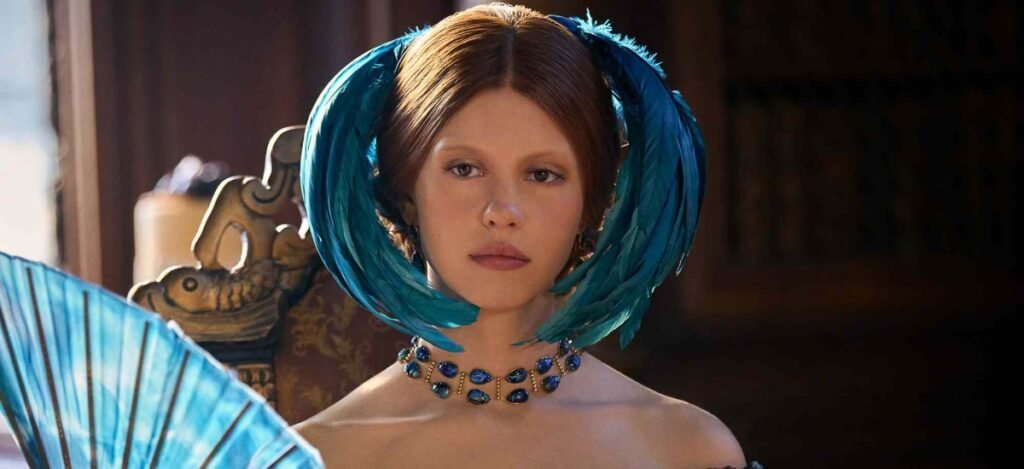
This is where Tiffany & Co.’s contribution becomes particularly meaningful. In del Toro’s version, Elizabeth (Mia Goth) isn’t merely Victor’s passive fiancée as in Shelley’s novel, she’s an entomologist and intellectual, engaged to Victor’s brother William, representing both scientific curiosity and moral clarity.
Costume designer Kate Hawley, Emmy-nominated for her work on projects like The Lord of the Rings: The Rings of Power, created Elizabeth’s extensive wardrobe with deliberate nods to her character’s interests in entomology and botany. Beetles and insects appear through patterns and garment shapes, with fabrics chosen to mimic the paper-thin quality of beetle wings.
The Tiffany pieces amplified these themes perfectly. Most striking is a Louis Comfort Tiffany necklace from the early 1900s, featuring blue glass beetle motifs in a gold setting, a piece that elegantly bridges Elizabeth’s scientific interests with period-appropriate luxury. “With the green dress, that design was inspired by butterflies, and the patterns on butterfly wings,” Goth explained to Refinery29 Australia.
“This was something that Guillermo and Kate were exploring a lot with Elizabeth, and all of the costumes, everything was thought through.”
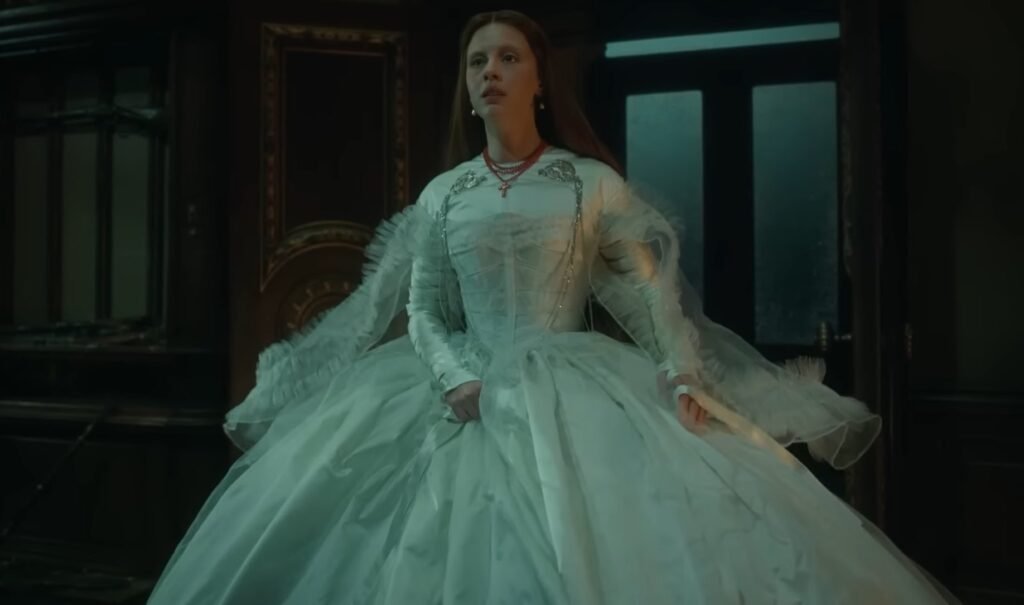
Elizabeth’s final costume, a white dress with satin ribbons wrapped around her arms like surgical bandages, pays deliberate homage to the Creature’s stitched-together body. “That was deliberate,” Goth confirmed. “That was there to mimic The Creature and his band-aids that he has when he’s first born.”
The Landmark Experience: Immersive Displays at Tiffany’s Fifth Avenue
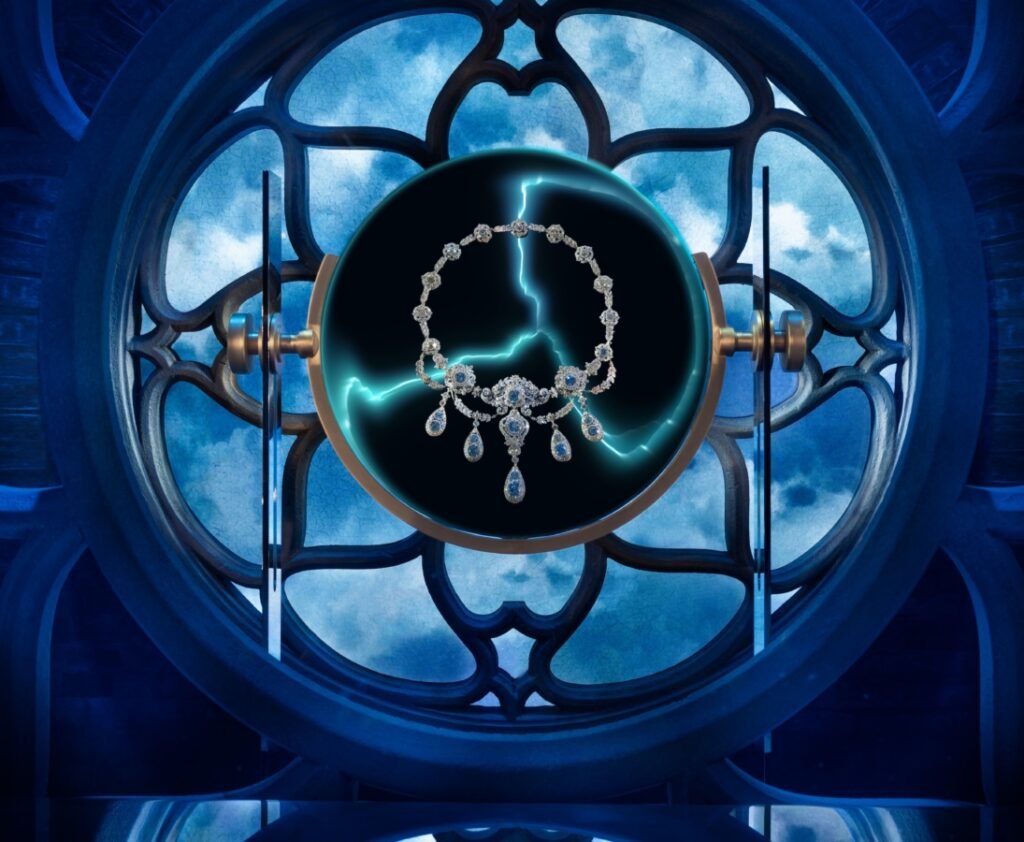
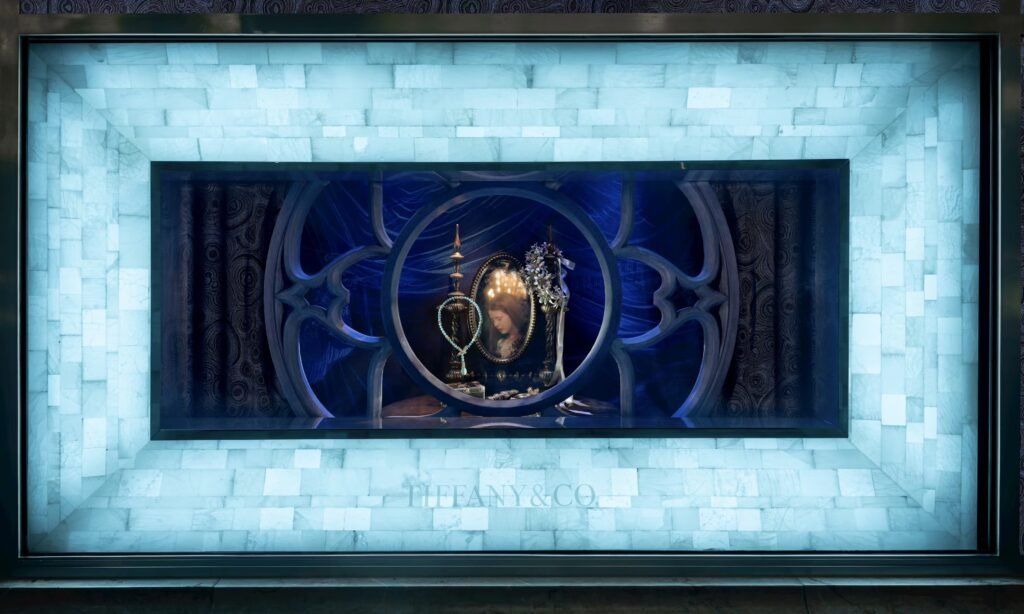
To celebrate the film’s premiere, Tiffany & Co. created an immersive experience that extends beyond the screen. At their Fifth Avenue flagship in New York, The Landmark, five spectacular windows were designed in collaboration with del Toro himself. Each window, framed by architectural elements mimicking Victor Frankenstein’s laboratory, reimagines pivotal film scenes.
Digital screens and animation merge with theatrical displays, all synchronized to Alexandre Desplat’s monumental score (Desplat won an Academy Award for his work on del Toro’s The Shape of Water).
Dramatic lighting “electrifies” Fifth Avenue, reaching its highest voltage after dark, a fitting tribute to the electrical themes at the story’s heart. Visitors can scan QR codes on the windows to unlock exclusive behind-the-scenes content.
Inside The Landmark, a curated presentation showcases the actual Tiffany jewels worn by Goth in the film, offering viewers a chance to examine the craftsmanship that links past and present.
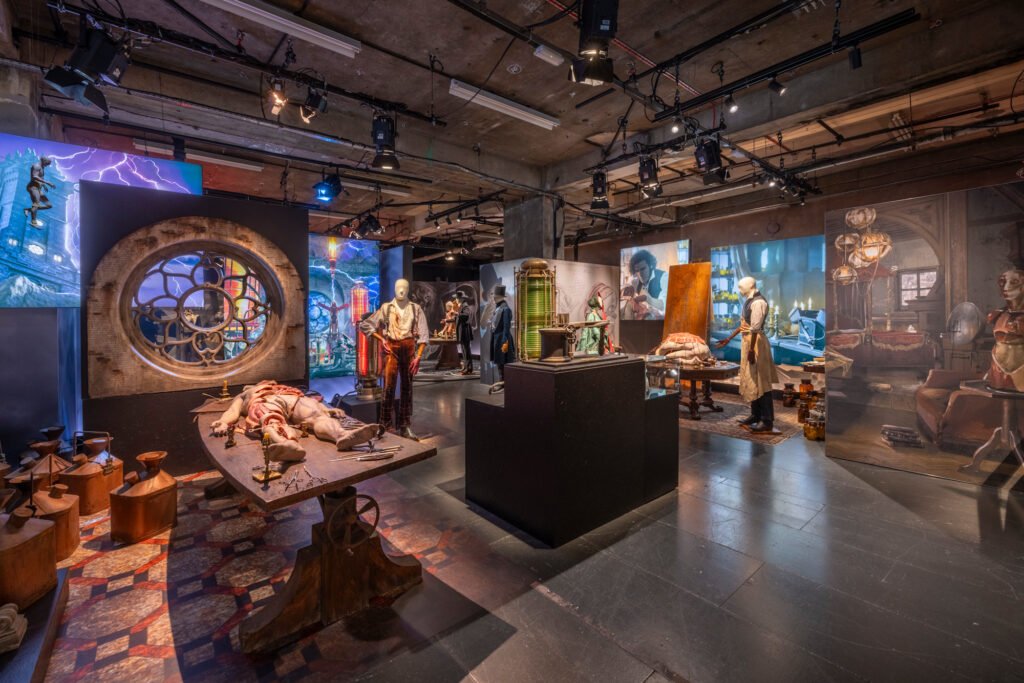
Frankenstein: Crafting A Tale Eternal (London Exhibition)
In London, Tiffany & Co. and Netflix continued the conversation with a breathtaking exhibition at The Old Selfridges Hotel: Frankenstein: Crafting A Tale Eternal. The exhibition allows visitors to view recreations of the archival Tiffany pieces on original costumes designed by Hawley, alongside stunning artifacts, artwork, and rare books curated by Peter Harrington to honor Mary Shelley’s legacy.
The Significance of Authenticity in the Tiffany & Co. Collaboration
What makes this collaboration particularly compelling is its commitment to authenticity. In an era when period films often rely on modern reproductions, del Toro and his team chose genuine artifacts, jewels that actually existed during or near Shelley’s time, created by Tiffany artisans working with the same techniques and aesthetic sensibilities.
This choice reflects del Toro’s broader approach to the material. Just as he retained the novel’s framing structure and restored the Creature’s eloquence, the use of authentic Tiffany pieces grounds the fantastical story in tangible history. These aren’t just beautiful objects; they’re witnesses to the past, carrying with them the design philosophy and craftsmanship of their era.
Frankenstein’s Cinematic Legacy: From Karloff (1931) to Elordi (2025)
To further understand the significance of del Toro’s adaptation and Tiffany’s role in it requires looking back at the long cinematic history of Frankenstein.
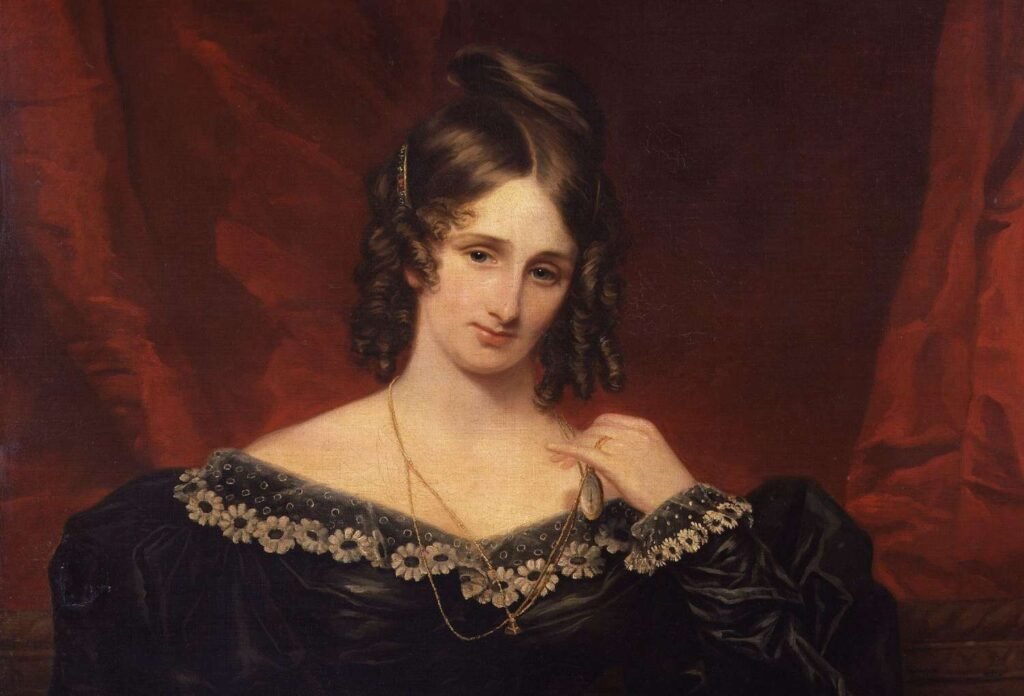
The story has been adapted countless times since Mary Shelley wrote it as a teenager in 1818, but one version towers above all others: James Whale’s 1931 Universal Pictures classic.
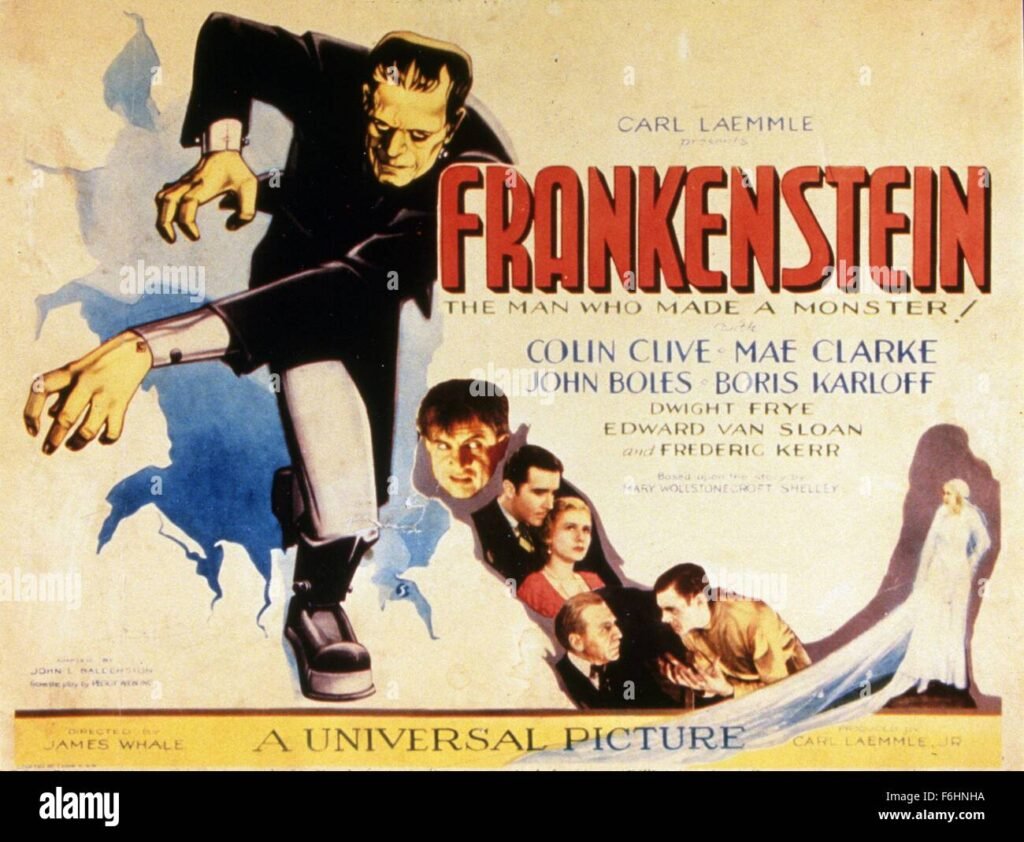
That film, starring Colin Clive as Dr. Henry Frankenstein and Boris Karloff as the Creature, fundamentally shaped how the world imagines the story. Karloff’s iconic portrayal, with his flat-topped head, neck bolts, and lumbering gait, became so deeply embedded in popular culture that the image remains instantly recognizable nearly a century later.
The 1931 film was a colossal success, grossing $12 million against a $262,000 budget, and spawned numerous sequels, including Bride of Frankenstein (1935) and Son of Frankenstein (1939).
However, Whale’s adaptation took significant liberties with Shelley’s novel. The Creature became largely nonverbal and childlike, driven by a “criminal brain” rather than the eloquent, self-educated, and emotionally complex being Shelley created.
The philosophical depth of the novel, questions about responsibility, creation, and what defines humanity, was streamlined into a straightforward horror narrative about a scientist whose creation goes awry.

Subsequent adaptations followed various paths. Mel Brooks’ Young Frankenstein (1974) lovingly parodied the Universal films, even using the original electrical equipment created by Kenneth Strickfaden for the 1931 version (which, remarkably, still worked after more than 40 years).
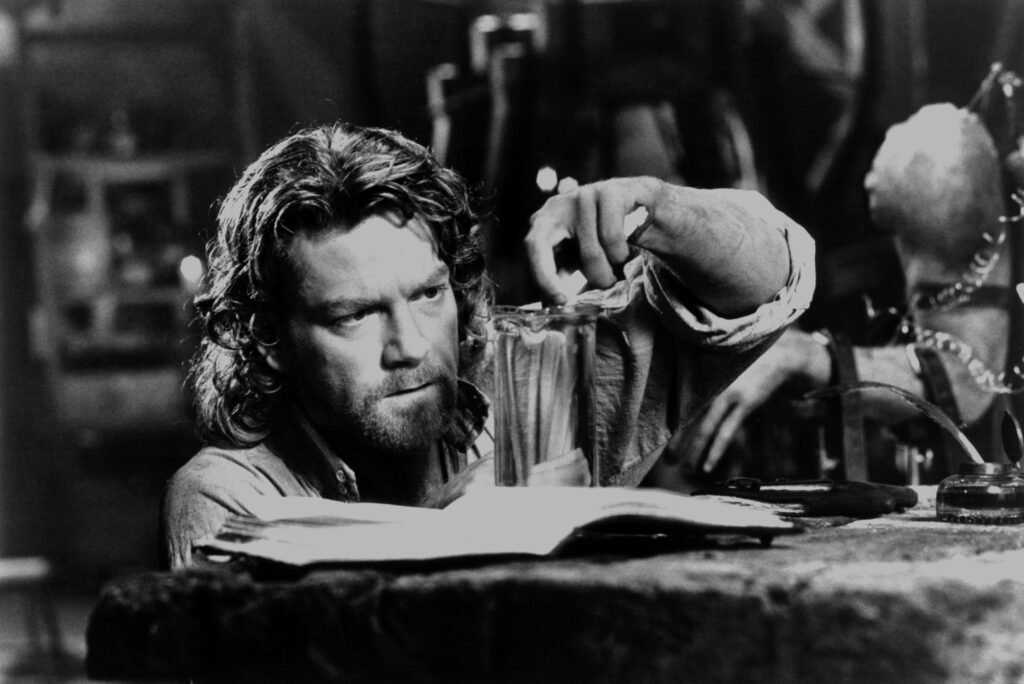
Kenneth Branagh’s 1994 Mary Shelley’s Frankenstein attempted a more faithful literary adaptation but was criticized for lacking the vitality of its source material.



